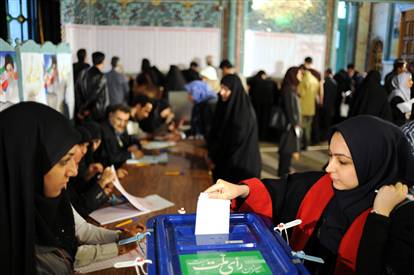 To start with, the political turmoil which gripped Iran over the last two weeks seemed curiously old-fashioned: Large numbers of demonstrators fighting the authorities, as people in other countries have done in the past. Yet in one important respect, the events in Iran appear to have transformed the world. This was the first political crisis fought not only in the streets, but also over the airwaves and the Internet, and with the most modern communication.
To start with, the political turmoil which gripped Iran over the last two weeks seemed curiously old-fashioned: Large numbers of demonstrators fighting the authorities, as people in other countries have done in the past. Yet in one important respect, the events in Iran appear to have transformed the world. This was the first political crisis fought not only in the streets, but also over the airwaves and the Internet, and with the most modern communication.
Despite their image as dour opponents of anything Western, Iran’s religious leaders have been surprisingly adept at harnessing technology to their advantage. Ayatollah Ruhollah Khomeini, the Islamic republic’s founder, used tape recorders and video cassettes to launch a revolution against the Shah. His successors encountered a few difficulties in migrating from the analogue to the digital age. At religious seminaries in Qom – the center of Iran’s Islamic studies – lessons in holy scriptures have been combined with workshops about blogging for years. As a result, Iran is an anomaly in the Middle East: A country where 21 million people – 28 per cent of the nation – are online, more than 100,000 blogs are constantly updated and almost everyone has a mobile phone. The Iranian authorities should have realized long ago that their techno-savvy citizens can no longer be controlled with traditional methods.
Last year, one bit of software which bypasses government Internet censorship spread like wildfire in Iran. More recently, the electoral campaign of Mr Mir Hossein Mousavi, the Iranian opposition leader, was fired up by supporters using the Facebook social website, or text messages on their cellphones. Yet despite these repeated warnings about the potential impact of new technology, Iran proved curiously inept at mastering the information war when it really mattered. As the demostrations erupted a fortnight ago, the authorities quickly expelled foreign correspondents, in an effort to staunch the flow of information. However, they failed to do so because, quite literally, every local demonstrator became a global journalist.
Thousands of pictures were beamed through mobile phones or YouTube. And hundreds of thousands of short messages were posted on Twitter. The impact was immense. The images of Ms Neda Agha-Soltan, the young Iranian student who bled to death after being shot by paramilitaries, shook the world. China’s Sina.com website dubbed Ms Agha-Soltan a “murdered angel”, while newspapers throughout the world printed her face on their front pages. This was – as some claimed – the real digital revolution, the first time the Internet took on a government, and apparently won. However, a healthy does of skepticism remains in order.
Technology allowed demonstrators to be heard, but also created a distorted impression. Those who did most of the “tweeting” were opponents of the regime; the millions of Iranians who support the authorities were just ignored. Furthermore, there was no way of verifying the accuracy of information. Many tweeters claimed to live in Teheran, but pictures sent indicated otherwise. To make matters worse, the thousands of self-proclaimed Western sympathizers who swamped the Internet ultimately accomplished what Iran itself failed to: slow down all connections and render incoming news meaningless. The true winners in this information war were actually some fairly well-established mediums – foreign radio and television stations beaming into Iran, in the local language.
Ayatollah Ali Khamenei, Iran’s supreme leader, recently singled out Britain as his country’s most “evil” enemy because the BBC’s Persian-language satellite TV broadcasts – launched from London earlier this year – have already attracted millions of local viewers. He knows what the fans of the Internet fails to realize: That while Twitter or YouTube may be good at keeping the world informed, foreign broadcasts into Iran are still the only way to influenece those who really matter – ordinary Iranian voters.
In short, “new” media is good at creating a short term but ephermeral impact, but the “old” media works more slowly, but its impact is more enduring.
Written by Jonathan Eyal of The Straits Times. Follow The Straits Times on Twitter for more news updates!